Ceramic tiles are one of the most durable and long-lasting finishes for any home. They’re versatile, used on walls, floors, and worktops, and come in a wide range of sizes, colours, and designs.
Other tile options include vinyl, lino, and cork, mainly used for flooring. These materials are easier to install and offer quieter steps compared to ceramic tiles.
Ceramic Tiles
Ceramic tiles are commonly used in kitchens and bathrooms, on walls and floors. They’re popular because they’re durable, water-resistant, and easy to clean.
Tiles are typically installed in high-moisture areas, like splashbacks behind sinks, showers, and wet rooms. In wet rooms, tiles often cover the entire room from floor to ceiling.
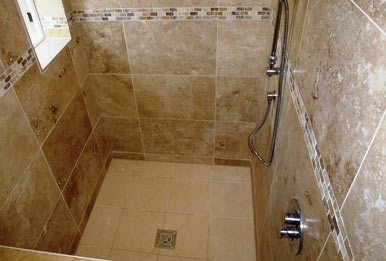
Wet room tiled floor to ceiling using large tiles – Image courtesy of dream-bathrooms.co.uk
Wall tiles are generally thin, though larger or imported tiles may be thicker. While square tiles are the most common, rectangular ones are gaining popularity.
Tile designs change with fashion trends, but plain tiles remain a timeless choice as they don’t go out of style. Some tiles can be arranged into "feature panels" for a dramatic effect, while "insert tiles" may include functional features like soap dishes.
Today, ceramic tiles come in semi-matt or textured finishes, offering a more modern look compared to traditional high-gloss tiles.
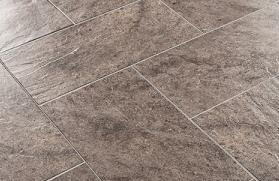
Textured floor tiles with a matt finish
Tiles are available with square or rounded edges. Traditionally, round edges were for exposed areas, but most tiles today are either universal or square-edged with two glazed sides for use on edges or perimeters.
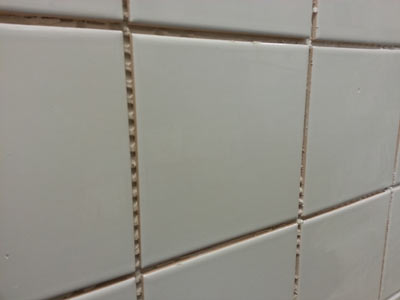
Traditional square edge ceramic wall tiles
Tiles for Floors and Worktops
Ceramic floor tiles are increasingly popular in homes, especially in high-traffic areas like porches and hallways. These tiles are thicker and more durable than wall tiles.
Like wall tiles, floor tiles come in a wide variety of shapes, colours, and designs.
Quarry tiles, unglazed ceramic tiles in brown, buff, or red tones, are ideal for hallways, kitchens, and conservatories. They are laid on mortar and sealed with a proprietary sealer or boiled linseed oil after grouting.
Terracotta tiles are similar to quarry tiles but larger. They are typically available in square or rectangular shapes and sealed in the same way.
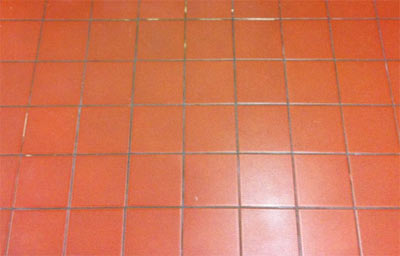
Floor tiled with red quarry tiles
Mosaic Tiles
Mosaic tiles are small, often plain, and sometimes patterned. They typically come in sheets with a cloth backing, making them easy to lay in adhesive, and then once in place, you can then grout the gaps.
Square mosaics are the most common, but round, hexagonal, and interlocking shapes are growing in popularity. These tiles are usually sold in 12″ (300mm) square sheets, often in packs of 5 or 10.
To calculate how many you need, measure the area to be tiled and divide it by the coverage provided on the tile packaging.
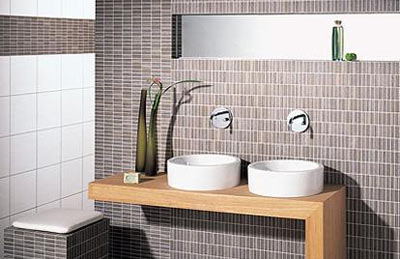
Bathroom tiled with mosaic tiles – Image courtesy of trendir.com
Cork, Vinyl, and Lino Tiles
Cork tiles are mainly used on floors. They feel warm and soft underfoot, providing some sound and heat insulation.
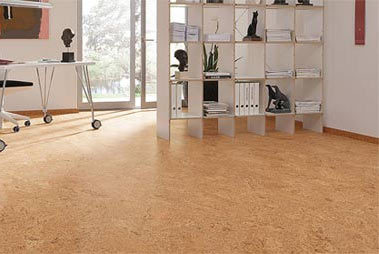
Modern cork tiled floor – Image courtesy of meister.com
Cheaper cork tiles need sealing for protection, but more expensive vinyl-coated versions are ready to use and easy to clean. However, even durable cork tiles can be damaged by heels or heavy furniture.
Vinyl tiles are available in many colours and patterns, offering more durability than cork. They are ideal for high-traffic areas but are less comfortable underfoot.
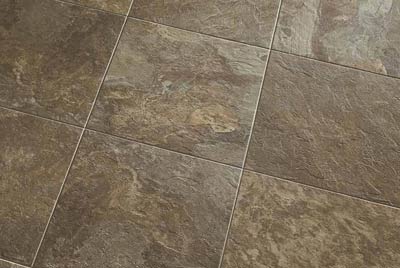
Modern vinyl floor tiles with a stone look
High-end vinyl tiles can mimic materials like marble or terrazzo. Most come with a self-adhesive backing for easy installation.
Many modern lino tiles are made from natural materials. Like vinyl, they come in various colours and styles, usually in 12″ squares and sold in packs of 9 or individually.
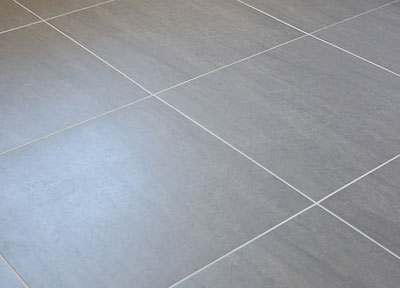
Large modern lino floor tiles
Other Types of Tiles
The above runs through the most commonly encountered types of tile you may run into in your home and at your local DIY store, however there are a few other different types that are less used, but are being used more and more today:
Natural Stone/Travertine Tiles
Natural stone tiles are exactly what you may imagine them to be, they are tiles made out of naturally occurring materials rather than man made or made from natural materials that have been processed or manufactured.
Natural tiles encompass all of the following different types of tile:
- Granite: Very hard wearing and stylish material, commonly used for worktops also. Formed from quartz, feldspar, potassium and sodium feldspar.
- Marble: Similar to granite, very hard and hard wearing material associated with very high class finishes. Formed from metamorphosed limestone.
- Limestone: One of the most popular forms of stone flooring tile, have been in use for centuries. Again very heard wearing and durable and easy to maintain.
- Sandstone: Not quite as popular as limestone, but still used a fair amount, they feature visible grains and layering giving them a bit more of a natural look.
- Slate: One of the best choices to make a statement with a floor. Slate tiles are again, hard wearing and durable and produce a very unique and stylish finish.
- Travertine: Another very popular choice when it comes to natural stone tiles, they are both reasonably priced and long lasting. Available in a range of colours and finishes.
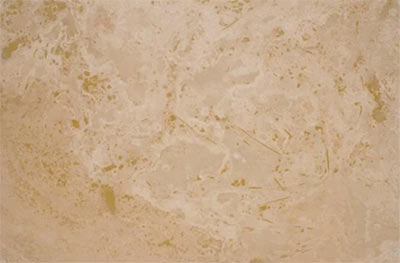
Example of a Travertine floor tile
Glass Tiles
Only really come on to the scene in recent years commercially, glass tiles are obviously made of glass and often feature a pattern or image sfor visual effect.
As glass is very slippery when wet, they’re not hugely suitable as floor tiles, however can feature a rough coating that then makes them more suitable.
They are generally used to great effect as splash-backs, shower panels or wall tiles.
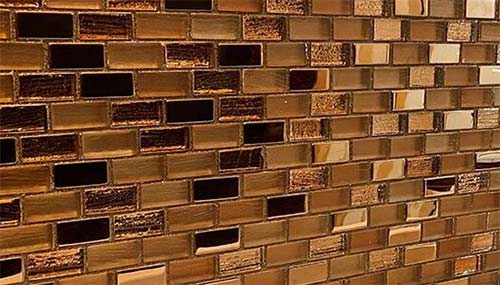
Glass mosaic wall tiles
Porcelain Tiles
Another very popular choice and almost as much as ceramic tiles, porcelain tiles feature an extremely hard glaze that makes them very hard wearing and a great choice for floor tiles.
Due to their popularity, they are available in a massive range of sizes, styles and designs, making then suitable for pretty much any application, both inside and outside.
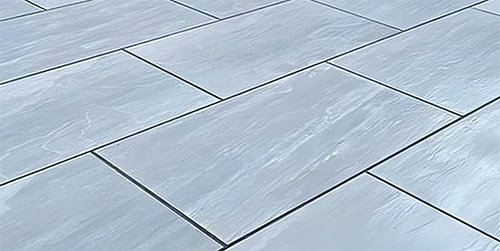
Porcelain external floor tiles
Cement/Concrete Tiles
As with some of the above, cement tiles are something of a more modern offering. Due to the ease of product and availability of materials, cement tiles are some of the cheapest on offer.
Due to their make up they are generally used to great effect when creating a more industrial or minimalistic look, however they are also available with a patterned finish.
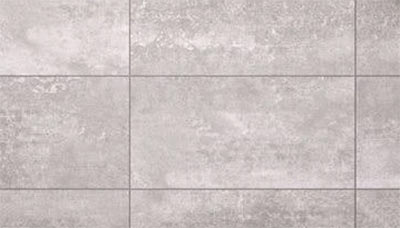
Concrete or cement floor tile
Metal Tiles
As you might imagine, metal tiles are somewhat of a newer, fairly recent innovation and generally tend to be used to great effect in modern, minimalist homes.
They are available as both floor and wall tiles, however, like glass tiles, can be very slippery when wet so need a non-slip coating to make them safe.
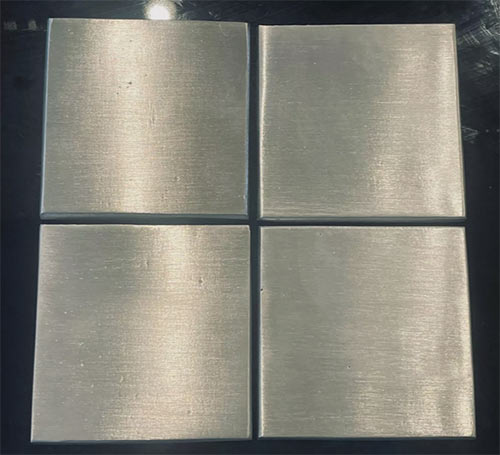
Metal square wall tiles
The choice of wall and floor tiles today is vast, with a tile size, style or design to suit pretty much every imaginable taste, so if you are planning a tiling job, take a look at the range on offer and go for what suits your existing decor.
To watch part 2 of the below video series click here and for the final part 3 click here.

